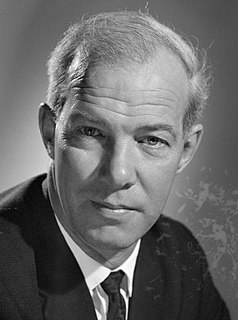 W
WPhillip Albert Amos was a New Zealand politician of the Labour Party.
 W
WFraser Barron DSO & Bar, DFC, DFM, was an officer of the Royal New Zealand Air Force (RNZAF) who flew as a pilot with Bomber Command and was killed in flying operations during the Second World War.
 W
WAir Commodore Keith Logan "Grid" Caldwell CBE, MC, DFC & Bar was a New Zealand fighter ace of the Royal Flying Corps in World War I who also rose to the rank of Air Commodore in the Royal New Zealand Air Force during World War II.
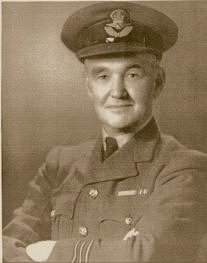 W
WEdward Caradus was a New Zealand analytical chemist, educator and administrator. He developed a model for training aircrew during World War II. In 1949 he became the first chair of the National Trades Certification Board.
 W
WJohn Milne "Johnny" Checketts, was a New Zealand flying ace of the Second World War, who was credited with the destruction of 14 1⁄2 enemy aircraft, three probably destroyed and 11 damaged.
 W
WAlbert "Bert" Edward Cooke was a New Zealand dual-code international rugby footballer of the 1920s and 1930s, who represented for New Zealand in both rugby union and rugby league.
 W
WAir Commodore Theodore Jasper Maclean de Lange CBE DFC was a senior officer in the Royal New Zealand Air Force (RNZAF). In his career, he served in the Solomans, Burma, India and Australia. He was awarded the Distinguished Flying Cross (DFC) in 1944 for high courage and devotion during the Pacific War. In the 1965 Queen's Birthday Honours, he was awarded the Commander of the Order of the British Empire (CBE), for his many years of distinguished service in the RNZAF.
 W
WAir Commodore Alan Christopher "Al" Deere, was a New Zealand fighter ace with the Royal Air Force (RAF) during the Second World War. He was also notable for the number of near death experiences he had during the course of the war. This led to his published autobiography being titled Nine Lives.
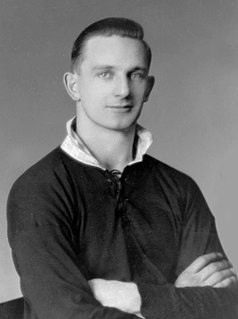 W
WJohn Dick was a New Zealand rugby union player. A wing three-quarter, Dick represented Auckland and, briefly, Canterbury, at a provincial level, and was a member of the New Zealand national side, the All Blacks, in 1937 and 1938. He played five matches for the All Blacks including three internationals.
 W
WRoger Patrick Blundell Drayton was a New Zealand politician of the Labour Party.
 W
WVance Drummond, was a New Zealand–born Australian pilot who fought in the Korean and Vietnam Wars. He initially saw service in the New Zealand military, but joined the Royal Australian Air Force in 1949 and graduated as a sergeant pilot in 1951. Posted to No. 77 Squadron in Korea, he flew Gloster Meteor jet fighters and earned the US Air Medal for his combat skills. He was shot down by a Mikoyan-Gurevich MiG-15 in December 1951 and imprisoned for almost two years. After returning to Australia he converted to CAC Sabre jets and in December 1961 became a flight commander with No. 75 Squadron; he subsequently led the squadron's Black Diamonds aerobatic team, and was awarded the Air Force Cross in 1965.
 W
WStewart Hector James Duff was a New Zealand businessman, civic advocate and politician. Rarely seen in public without his trademark bow tie, his dedication to improving Wellington's airport was second to none.
 W
WRaymond William George Emery was a New Zealand cricketer who played two Tests for New Zealand in 1952. He was also an officer in the Royal New Zealand Air Force.
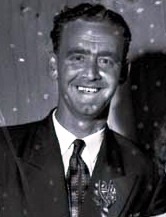 W
WArthur James Faulkner was a New Zealand politician of the Labour Party.
 W
WAir Commodore James Lloyd Findlay was a New Zealand soldier and air force officer who served in both World Wars.
 W
WGeoffrey Bryson Fisken, was a New Zealand fighter pilot who was the British Commonwealth's leading air ace in the Pacific theatre of World War II. He is credited with shooting down 11 Japanese aircraft.
 W
WAntoni (Toni) Głowacki DFC, DFM, was a Polish Second World War fighter pilot flying with Polish Squadrons attached to the Royal Air Force, who is notable for shooting down five German aircraft on 24 August 1940 during the Battle of Britain, becoming one of only four pilots who gained "ace-in-a-day" status during that battle, the others being New Zealander Brian Carbury, Englishman Ronald Hamlyn and Scot Archie McKellar.
 W
WSir Edmund Percival Hillary was a New Zealand mountaineer, explorer, and philanthropist. On 29 May 1953, Hillary and Sherpa mountaineer Tenzing Norgay became the first climbers confirmed to have reached the summit of Mount Everest. They were part of the ninth British expedition to Everest, led by John Hunt. From 1985 to 1988 he served as New Zealand's High Commissioner to India and Bangladesh and concurrently as Ambassador to Nepal.
 W
WThomas Welch Horton, is a retired Royal New Zealand Air Force (RNZAF) officer, pilot, and combat veteran who served with the Royal Air Force (RAF) in a number of significant engagements during the Second World War. He was a member of No. 88 Squadron RAF and flew anti-ship missions in the Bristol Blenheim and Douglas Boston. Horton also served with and later commanded No. 105 Squadron RAF flying the de Havilland Mosquito in the Pathfinder Force (PFF) that marked targets for destruction by following groups of heavy bombers.
 W
WSir Roy Emile Jack was a New Zealand politician of the National Party. He was a cabinet minister and Speaker of the House of Representatives.
 W
WKenneth Cecil James, was a New Zealand Test cricketer who played for Wellington and Northamptonshire.
 W
WEdgar James Kain, DFC was a New Zealand fighter pilot and flying ace who flew in the Royal Air Force (RAF) during the Second World War.
 W
WPhillip John Lamason, was a pilot in the Royal New Zealand Air Force (RNZAF) during the Second World War, who rose to prominence as the senior officer in charge of 168 Allied airmen taken to Buchenwald concentration camp, Germany, in August 1944. Raised in Napier, he joined the RNZAF in September 1940, and by April 1942 was a pilot officer serving with the Royal Air Force in Europe. On 8 June 1944, Lamason was in command of a Lancaster heavy bomber that was shot down during a raid on railway marshalling yards near Paris. Bailing out, he was picked up by members of the French Resistance and hidden at various locations for seven weeks. While attempting to reach Spain along the Comet line, Lamason was betrayed by an double agent within the Resistance and seized by the Gestapo.
 W
WAllen Fisher Lissette was a New Zealand cricketer who played in two Tests in 1956.
 W
WEvan Dall "Rosie" Mackie, was a New Zealand fighter pilot and flying ace of the Second World War. Many New Zealand pilots who served overseas enlisted in the Royal Air Force (RAF); Mackie chose to join the Royal New Zealand Air Force (RNZAF) and as such, with 21.5 "kills", he was the highest scoring member of that service.
 W
WSir Roy Allan McKenzie was a New Zealand horse breeder and racer, and was well known for his philanthropy.
 W
WSquadron Leader John Leslie Munro, was a Royal New Zealand Air Force pilot during World War II and the last surviving pilot of the Dambusters Raid of May 1943.
 W
WWilliam Harold Nelson was a New Zealand long-distance runner who won two medals at the 1950 British Empire Games in Auckland.
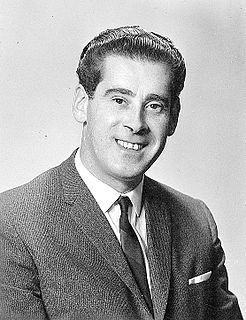 W
WJohn Gerald O’Brien, known as Gerald O'Brien, was a New Zealand politician of the Labour Party.
 W
WSydney Ernest Scales was a New Zealand cartoonist.
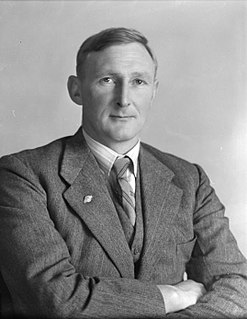 W
WThomas Philip Shand was a New Zealand politician of the National Party.
 W
WKeith Frederick (Jimmy) Thiele, was an officer of the Royal New Zealand Air Force (RNZAF) during the Second World War. He was one of only four New Zealand born airmen to receive two medal Bars to his Distinguished Flying Cross.
 W
WRobert James Tizard was a Labour politician from New Zealand. He served as Deputy Prime Minister, Minister of Finance, Minister of Health and Minister of Defence.
 W
WGroup Captain Leonard Henry Trent, was a New Zealand aviator, senior Royal Air Force officer, and recipient of the Victoria Cross (VC), the highest award for gallantry in the face of the enemy that can be awarded to British and Commonwealth forces.
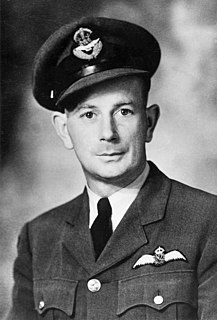 W
WFlying Officer Lloyd Allan Trigg VC DFC, of Houhora, New Zealand, was a pilot in the RNZAF during World War II. He was a posthumous recipient of the Victoria Cross, the highest award for gallantry in the face of the enemy for British and Commonwealth armed forces, and received the award for pressing home an attack on a German U-boat in August 1943. He was killed in the action. His award is unique, as it was awarded on evidence solely provided by the enemy, for an action in which there were no surviving Allied witnesses to corroborate his gallantry.
 W
WSiaosi Tuʻihala ʻAlipate Vaea Tupou, more commonly known as Baron Vaea, was a Tongan politician who served as Prime Minister of Tonga. Vaea was a nephew of Queen Sālote, who ruled Tonga from 1918 until 1965, and a member of the Tongan nobility. His career in the Tongan government spanned 54 years.
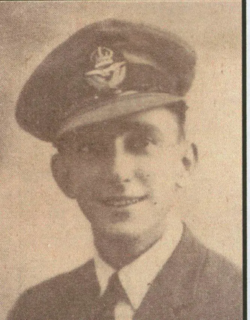 W
WDerek Harland Ward, was a New Zealand flying ace of the Royal Air Force (RAF) during the Second World War. He was credited with six confirmed victories and one probable.
 W
WJames Allen Ward VC was a New Zealand recipient of the Victoria Cross (VC), the highest and most prestigious award for gallantry in the face of the enemy that can be awarded to British and Commonwealth forces.
 W
WEdward Arthur "Ben" Waters was a New Zealand rower who won two medals at the 1930 British Empire Games. He later unsuccessfully stood as a Labour parliamentary candidate at several elections.
 W
WFrank Vernon Watkins was an officer of the Royal New Zealand Air Force (RNZAF) during the Second World War. He was killed in air operations trying to save a close comrade and for this action was recommended for the Victoria Cross, the highest award for gallantry in the face of the enemy that can be awarded to British and Commonwealth forces.
 W
WThomas Martin Wilkes CBE, MC was a New Zealand soldier who later, as an Air Force Group Captain, was appointed to the Royal New Zealand Air Force's Air Board and served as Controller of Civil Aviation in New Zealand as part of a twenty-year career during which he developed and regulated civil aviation policy.